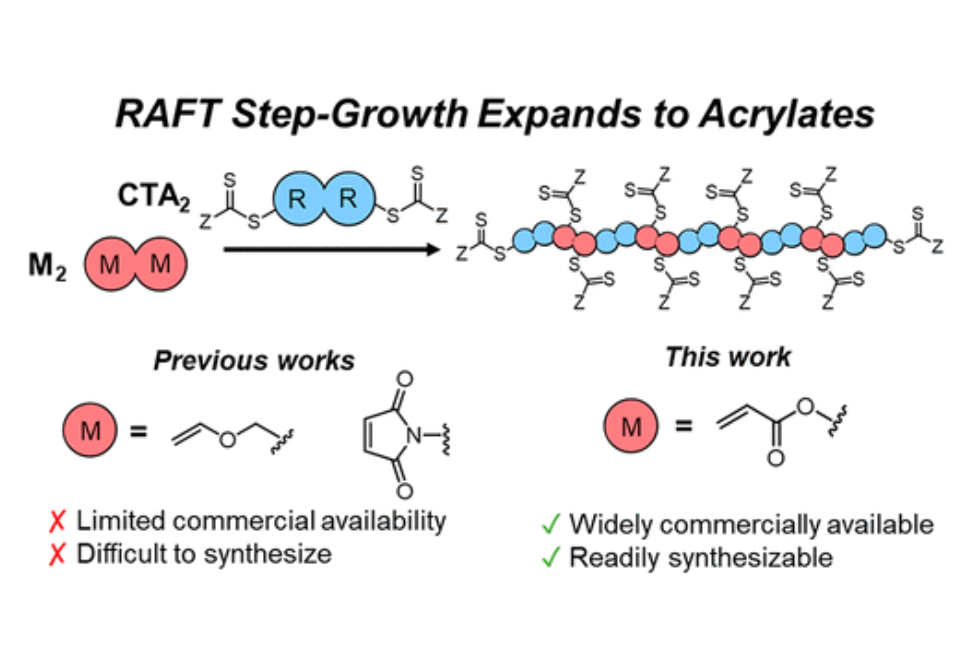RAFT Step-Growth Polymerization of Diacrylates
Abstract
RAFT step-growth polymerization was previously demonstrated with monomers that bear low rate of homopropagation to favor the chain transfer process; by contrast, acrylates are known to be fast homopropagating monomers, thereby posing serious challenges for RAFT step-growth. Here, we identified a chain transfer agent (CTA) that rapidly yields single unit monomer inserted (SUMI) CTA adducts with a model acrylate monomer. Using a bifunctional reagent of this CTA, we successfully demonstrated RAFT step-growth polymerization with diacrylates, yielding linear polymer backbones. Furthermore, we achieved inclusion of functionality (i.e., disulfide) into RAFT step-growth polymer via a disulfide incorporated bifunctional CTA. Grafting from this backbone resulted in molecular brush polymers with cleavable functionality in each repeat unit of the backbone, allowing selective degradation to afford well-defined unimolecular species of two polymeric side chains. Given the wide selection of commercially available diacrylates, RAFT step-growth polymerization of diacrylates will further enable facile synthesis of complex architectures with modular backbones.
Citation
RAFT Step-Growth Polymerization of Diacrylates
Noel E. Archer, Parker T. Boeck, Yasmin Ajirniar, Joji Tanaka, and Wei You
ACS Macro Letters 2022 11 (9), 1079-1084
DOI: 10.1021/acsmacrolett.2c00476


